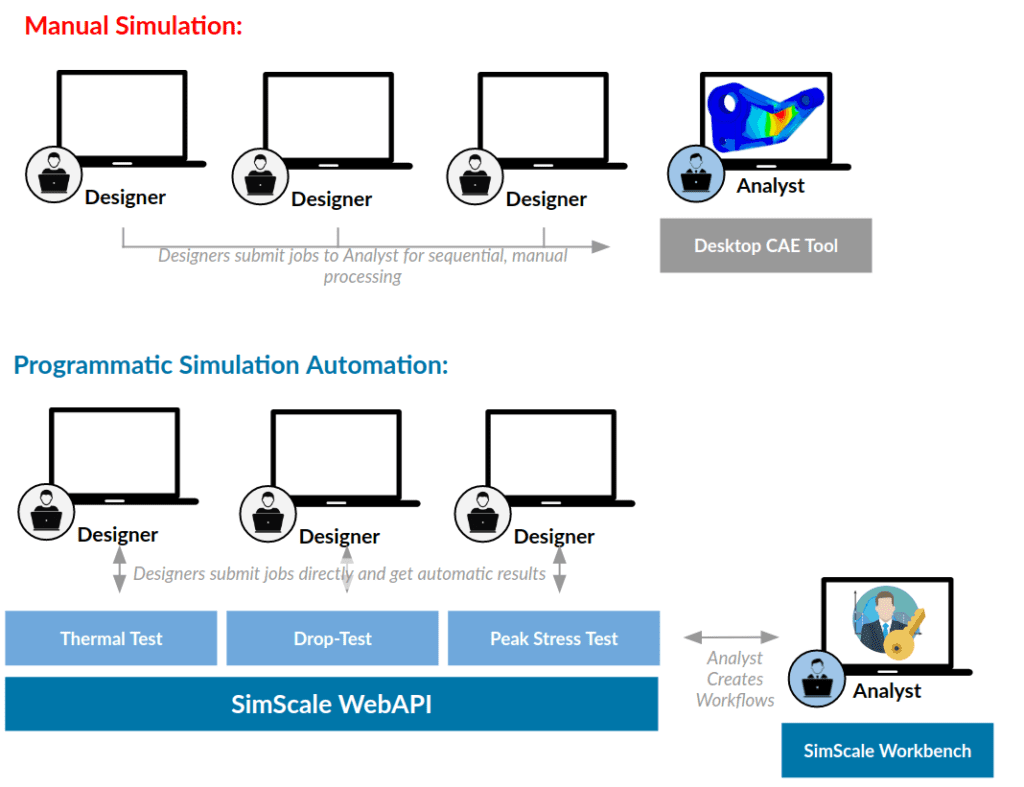Design simulation is a complex task. The amount of physics needed to capture the real-world performance of systems, whether they be buildings, cities, electronic components or cars can be daunting. The expectation to model faster, more accurately and cheaper is always growing as we push the limits of our knowledge and the boundaries of our design thinking. For example, in the built environment, the recent push for net-zero buildings and cities is creating a demand for highly advanced building physics modeling tools to simulate the performance of buildings and city-scale projects.
Large and complex 3D models are the primary input into any simulation tool, coupled with the intricacies of representing dynamic inputs like climate, occupancy, comfort, and energy requirements, the simulation tools and skills needed to achieve a net-zero built environment are enormous and growing. Likewise, in other industries such as electronics design, automotive, and HVAC, the need to continuously improve the performance of components while reducing time and cost is driving the adoption of more and more complex design tools, and similarly complex workflows connecting those tools.
Download our ‘Tips for Architecture, Engineering & Construction (AEC)’ white paper to learn how to optimize your designs with cloud-based CFD!
When designers need to use the power of computational fluid dynamics (CFD) to optimize the performance of their designs, the typical workflow is to import a CAD model into the CFD software and run the simulation. This means the simulation process goes from the designer to simulation specialist in a cumbersome process, which stifles the iterative design process as well as time to result and time to decide, especially during early design stages. SimScale’s API now allows direct integration with a CAD software stack.
“SimScale is excited to empower designers with state-of-the-art scalable simulation power, enabled by our powerful API! And this is just the start – more integrations are in the works already.”
Anatol Dammer
Co-Founder and Product Manager

SimScale’s Web API: Simulation Reimagined
Let’s look at an example from the AEC industry. For example, an urban master plan design goes from the urban planner (designer) to CAD technician to analyst back and forth until they arrive at an acceptable design variation. This variation is arrived at by using experience and design tools with some simulation at one of the stages of design, normally towards the end to verify the design, as opposed to being used to properly inform the design process early on.

A better way to implement a design workflow is to automate the process as much as possible using an integrated software solution fit for this purpose and aligned to give the desired outcome. A more automated, rather than manual approach is described in the image above. Now, the SimScale API can be used to drive the entire design process, linking with, and driving multiple design tools. In this case, the preferred CAD tool could be automated to output multiple design iterations, all of which are simulated in SimScale on the cloud, in parallel.
This means, the results of those simulations, which evaluate the environmental and comfort advantages of each design scenario, can be assessed by the design team in near real-time and, at once. As and when informed changes are made to a particular design, the simulation runs once again and outputs the desired results. This process is automated and the results visualized in an easy to understand manner. Collaboration tools also allow for the urban planner, CAD expert, simulation analyst, and other project team members to view, edit, and communicate via a web browser.
What Is a Web API and What Does It Offer?
An Application Programming Interface (API) is a way for third-party developers and users to access and control the key features of a particular software tool. The ‘access’ is granted using special permissions or API keys as they are known, and the ‘control’ is scripted using a convenient Standard Development Kit (SDK). Various SimScale SDKs are available including in Python and C# programming languages. For example, Python is a widely used and accessible language prevalent in the AEC industry. Many users of visual scripting tools such as Grasshopper and Rhino will be familiar with using Python. Those same Python skills can be used to link to the SimScale API and significantly improve your analysis capabilities. A Grasshopper component to easily connect to SimScale will also be made available.
A New Way To Simulate: Integrated Solutions With the SimScale API
Implementing a seemingly sophisticated simulation process in any organization is now simple for two chief reasons.
- Firstly, SimScale is a cloud-native application, meaning it is hosted entirely on the cloud and does not require any special hardware to run. There is also no need for complex licensing schemes as in the past. Rolling out team-wide licenses is as simple as giving a username and login to any member of staff. This also enables SimScale to be a collaboration tool not just for team members but also for the purposes of technical support. A SimScale expert can easily be invited to your project and become your virtual team member, offering live and real-time support through the platform.
- Secondly, the API integration from SimScale allows your simulation capabilities to scale significantly. Instead of working on a few designs and using a traditionally manual and sequential analysis process, you now have the power to evaluate dozens of designs at the same time, all controlled using a single platform and automated process. Beyond building workflows for specific applications, design automation and optimization with an arbitrarily scalable simulation backend are now possible, leading to a true iterative and generative design capability. Other compelling use cases are ‘digital twin’ solutions, where our web API is a perfect fit for gathering data from devices in the field, feeding those into simulations, and deriving actionable insights, for example, for predictive maintenance.
Stay tuned for detailed articles on those later use cases, and our official API Integration launch in 2020 with the Virtual Wind Tunnel solution for AEC!

Summary of SimScale’s API Integration Capabilities: Empowering Designers
Urban designers, architects, and engineers using SimScale can now do the following with minimum input through our new web API integration:
- Perform urban microclimate, and indoor thermal comfort studies directly from their CAD software, or seamlessly integrated apps.
- Promote data-driven design by providing a robust and convenient simulation environment for non-simulation experts.
- Automate the iterative design process using the SimScale API.
- Easily manage and analyze results using collaboration features.
SimScale is working on integrated API solutions like this for other industries and applications as well.



